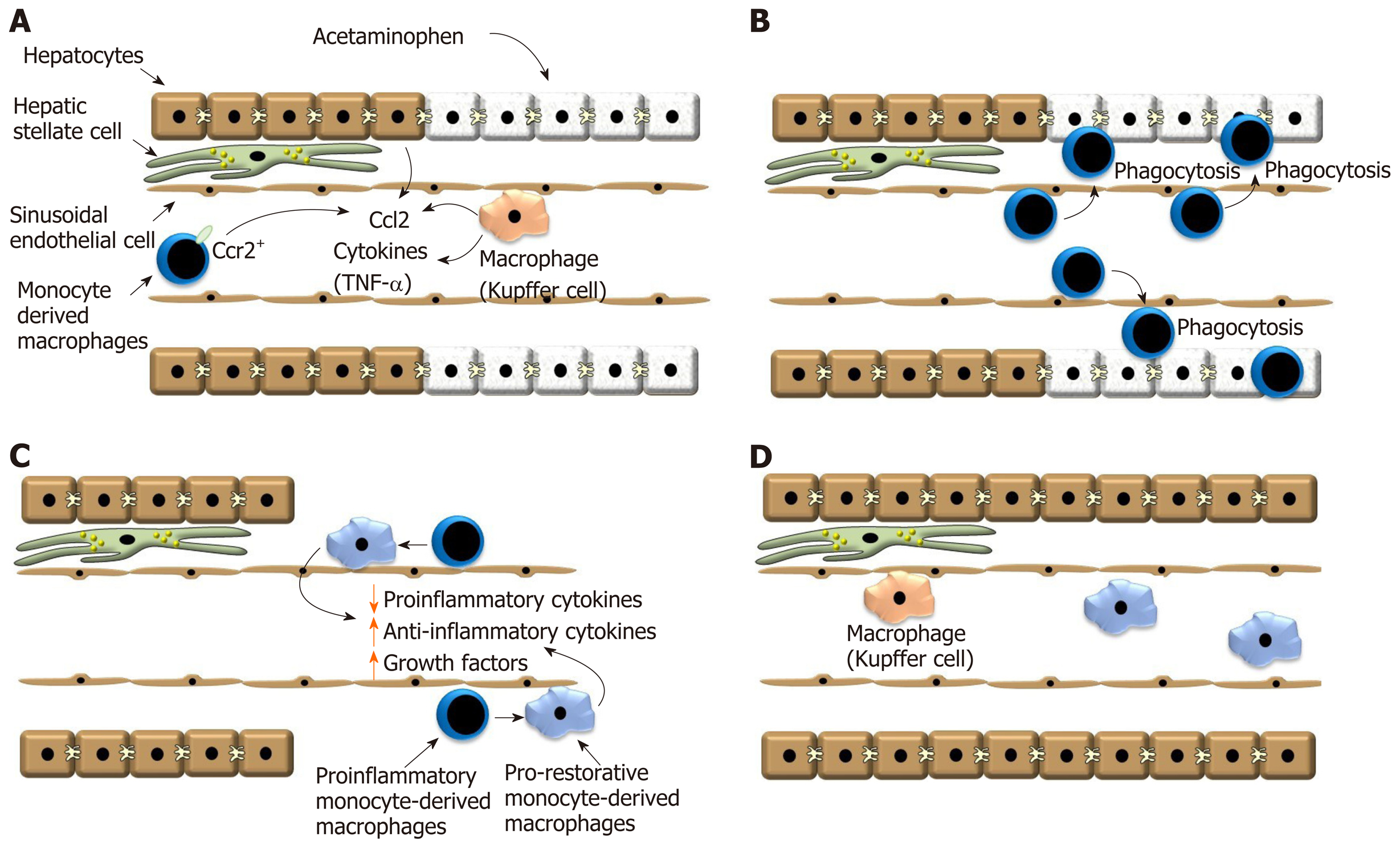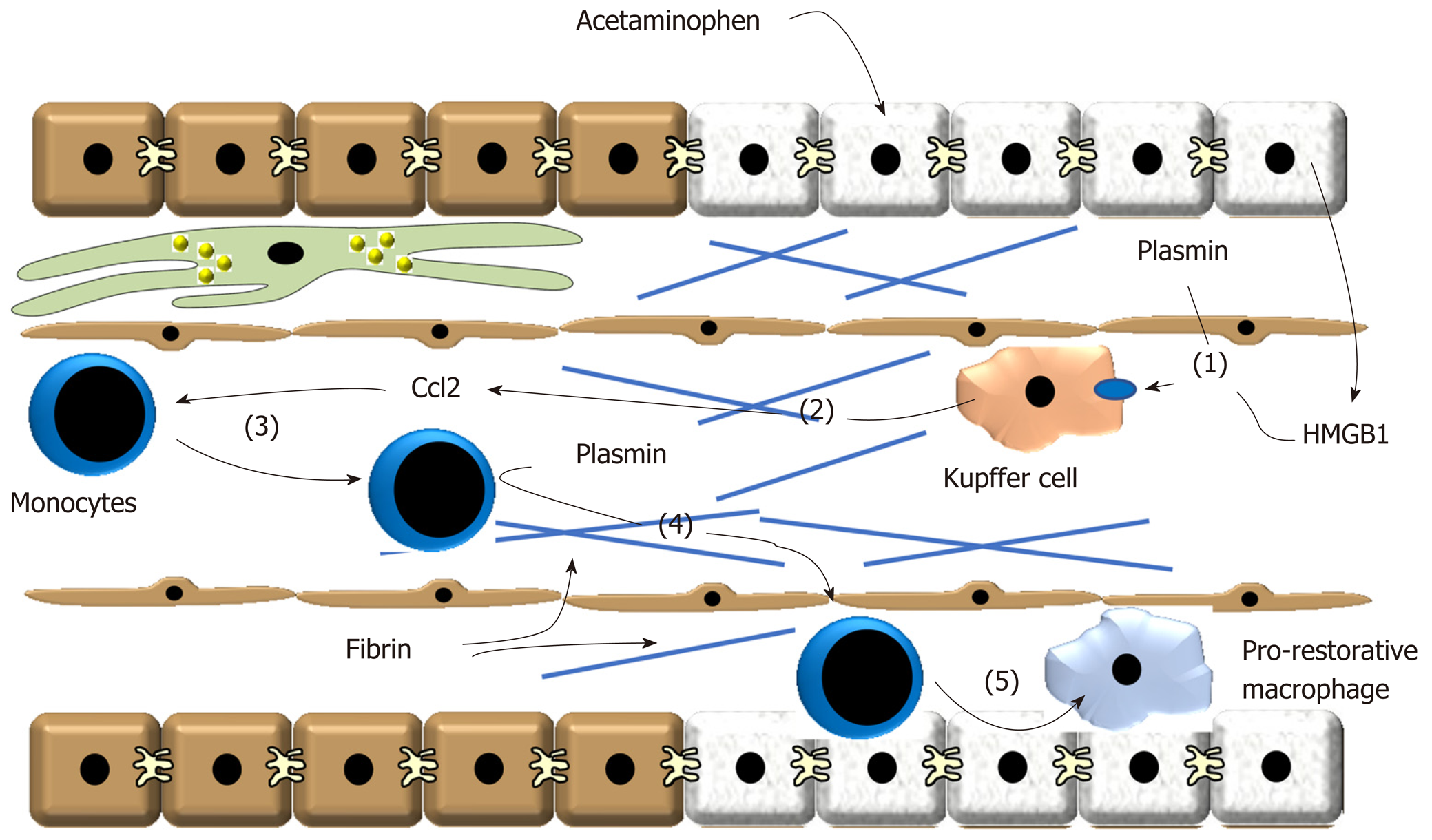Copyright
©The Author(s) 2020.
World J Gastroenterol. Apr 28, 2020; 26(16): 1879-1887
Published online Apr 28, 2020. doi: 10.3748/wjg.v26.i16.1879
Published online Apr 28, 2020. doi: 10.3748/wjg.v26.i16.1879
Figure 1 Ly6Chi CX3CR1- proinflammatory macrophages rapidly accumulate in the liver after acetaminophen overdose.
A: After exposure to a hepatotoxicant, such as acetaminophen, hepatocyte necrosis triggers release of Ccl2 by hepatocytes and Kupffer cells. Ccl2 recruits Ccr2 expressing monocytes to the liver that ultimately become macrophages; B: Monocyte-derived macrophages traffic into the necrotic lesions where they phagocytose dead cell debris; C: Monocyte-derived macrophages then transition from a proinflammatory phenotype into a pro-reparative phenotype. This process decreases synthesis of proinflammatory cytokines, increases synthesis of anti-inflammatory cytokines and pro-reparative growth factors; D: Proliferation of hepatic cells ultimately results in the restoration of the hepatic structure. Ccl2: Chemokine, chemokine ligand 2; Ccr2: C-C chemokine receptor type 2; TNF-α: Tumor necrosis factor.
Figure 2 Treatment of these cells with plasmin increased expression of tumor necrosis factor-α, Ccl2, Cxcl1 and Cxcl2 consistent with the hypothesis that plasmin directly activates Kupffer cells.
(1) After acetaminophen overdose, plasmin is generated and high-mobility group B1 is released from dead hepatocytes. These synergize to stimulate release of (2) pro-inflammatory cytokines, including Ccl2, from Kupffer cells. (3) Ccl2 stimulates recruitment of proinflammatory monocytes that accumulate at the periphery of the necrotic lesion. (4) Plasmin generation stimulates degradation of fibrin and/or activate matrix metalloproteinases that facilitate trafficking of the monocytes into the injured region. (5) The monocytes phagocytose dead cells which contributes to their conversion of pro-restorative macrophages. Ccl2: Chemokine, chemokine ligand 2; HMGB1: High-mobility group B1.
- Citation: Roth K, Strickland J, Copple BL. Regulation of macrophage activation in the liver after acute injury: Role of the fibrinolytic system. World J Gastroenterol 2020; 26(16): 1879-1887
- URL: https://www.wjgnet.com/1007-9327/full/v26/i16/1879.htm
- DOI: https://dx.doi.org/10.3748/wjg.v26.i16.1879










